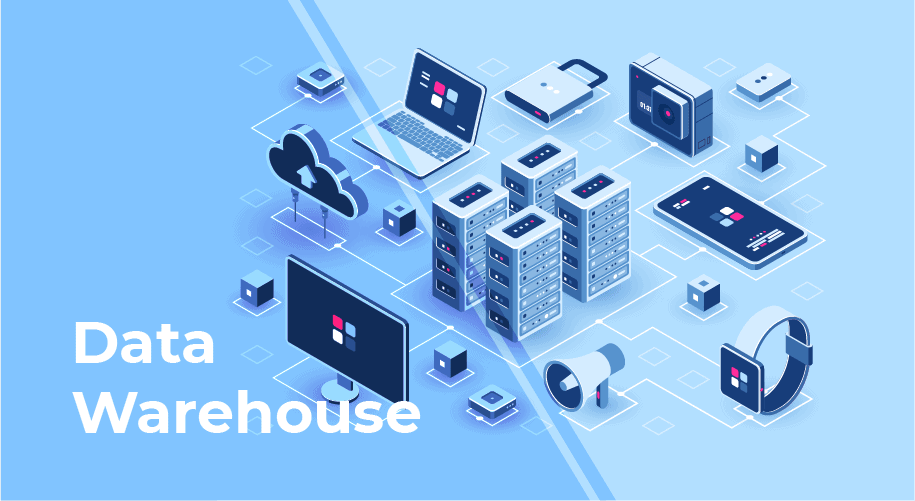Do you already know what a data warehouse is?
We would love to say that companies, above all else, value their employees, but it would be as naive as it is false. Yes, because at the top of the companies’ scale of values is data. The precious data. Data that actually only plays an important role when properly stored. And here is where the data warehouses come in.
What exactly is a data warehouse?
A data warehouse is actually a way of managing your data, specially designed, of course, to support business activities, especially those related to analytics. Enterprise data warehouses contain, of course, vast amounts of historical data to collate, query, pattern or analyze. These data, which the warehouse centralizes, come from a wide and different range of sources. We have the type: application log files, transaction applications, etc.
Apart from centralizing data and unifying their sources, data warehouses help in the decision-making process. This is because they contain valuable raw business knowledge. A very rich historical record for analysts and data experts. And from them, from the experts, we have taken the main advantages of data warehouses:
- Source tracking and verification Thanks to data warehouses, we may trace the data to its source and verify both the information as well as the root it comes from. That way we will be able to store this source in our database and always ensure consistent and relevant information.
- Sifting relevant data for companies. Once in the system, the quality and integrity of the data is guaranteed. Companies will only have useful data, those necessary for their activities, since the data warehouse format predisposes the analysis of their information at any time and under any circumstance. No one should any longer depend on a hunch or rash from the decision-maker, incomplete or poor quality data. The results will be fast and accurate.
- In the data warehouse, the data is copied and processed, integrated and restructured, in advance, in a Semantic Data Store. This makes any analysis process much easier.
- Imagine analyzing large amounts of data of all kinds and retrieving a value from them in a specific and precise way.
Types of data warehouses
If we strictly stick to company data warehouses, today we can have three main types:
- Enterprise Data Warehouse (EDW): A data warehouse that contains the business data of a business and that includes all the information about its customers. It enables data analysis and can provide actionable insights. It also offers a unified approach to organizing and representing such data.
- Operational Data Warehouse (ODS): We are faced with a central database that provides us with a snapshot of the freshest data from multiple transactional systems so that we can prepare operational reports. The ODS enables organizations to combine data in its original format, from several sources, to produce business reports.
- Data market: It focuses on a single functional area of an organization and encompasses a subset of stored data. The data marketplace is specially designed for use by a specific department or set of users in an organization. We are talking about a condensed version of the data warehouse.
Small retrospective
Most would stop the clock on their time machine in 1980, where they believe that the concept of the data warehouse arises, but we would have to let it run a little further back, to the hippy sixties. When Dartmouth and Mills develop the term dimension and facts in a collaborative project.
Then we would advance to the seventies to witness how Nielsen and IRI introduce Dimensional Data Marts for retail sales, Tera Data Corporation launches a database management system prepared to help and assist in making decisions, and then, after a decade of progress, in the eighties, where the first implementation of a data warehouse emerged by the hand of Paul Murphy and Barry Devlin, IBM workers.
From the data warehouse to the Cloud?
As we have already seen in previous articles, the coronavirus pandemic that has devastated our planet has a lot to do with the new technological restructuring and with the religious ascents to the Cloud. It is also, of course, to blame for moving data warehouses to Cloud platforms.
On-premise data warehouses have great advantages: security, speed, etc. But they are not that elastic, and the foresight to determine how to scale the data warehouse, regarding future needs, is quite complex. During the famous Confinement, most moved to the Cloud and the data warehouses were going to follow their example of course. Even those in large companies, those who no one thought they could abandon their local data centers, are switching to the Cloud to make the most out of its advantages. That flexibility in computing and storage. Its ease of use, its versatile management and its profitability.
Tomorrow: Automation of the data warehouse
The list of issues a data warehouse deals with is still there: data integration, data views, data quality, optimization, competing methodologies, and so on. However, we can find an answer: warehouse automation..
With data warehouse automation, a data warehouse can use the latest technology for pattern-based automation and advanced design processes. This allows you to automate the planning, modeling and integration steps of the entire life cycle. We are faced with what seems like a very efficient alternative to traditional data warehouse design, one that reduces time-consuming tasks such as generating and deploying ETL codes on a database server.
After this long journey through the life and exploits of the data warehouses, we say goodbye, as you can see, focusing on the answers that it promises to give us in the near future. We will always be positive in the matter.
Would you like to find out more about what Pandora FMS can offer you? Find out clicking here . If you have to monitor more than 100 devices, you can also enjoy a FREE 30-day Pandora FMS Enterprise TRIAL. Installation in Cloud or On-Premise, you choose !! Get it here.
Last but not least, remember that if you have a reduced number of devices to monitor, you may use Pandora FMS OpenSource version. Find more information here .
Do not hesitate to send your questions. The great team behind Pandora FMS will be happy to assist you! And if you want to keep up with all our news and you like IT, release and, of course, monitoring, we are waiting for you in our blog and in our different social networks, from Linkedin to Twitter through the unforgettable Facebook . We even have a YouTube channel , and with the best storytellers. Ah well, we also have a new Instagram channel ! Follow our account, we still have a long way to go to match that of Billie Eilish.

Dimas P.L., de la lejana y exótica Vega Baja, CasiMurcia, periodista, redactor, taumaturgo del contenido y campeón de espantar palomas en los parques. Actualmente resido en Madrid donde trabajo como paladín de la comunicación en Pandora FMS y periodista freelance cultural en cualquier medio que se ofrezca. También me vuelvo loco escribiendo y recitando por los círculos poéticos más profundos y oscuros de la ciudad.
Dimas P.L., from the distant and exotic Vega Baja, CasiMurcia, journalist, editor, thaumaturgist of content and champion of scaring pigeons in parks. I currently live in Madrid where I work as a communication champion in Pandora FMS and as a freelance cultural journalist in any media offered. I also go crazy writing and reciting in the deepest and darkest poetic circles of the city.
















